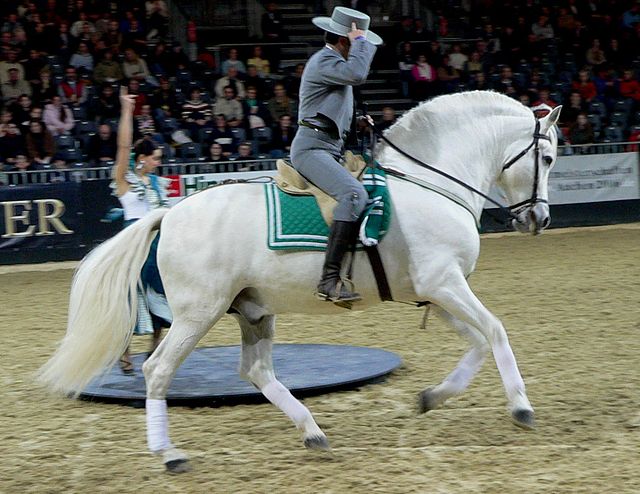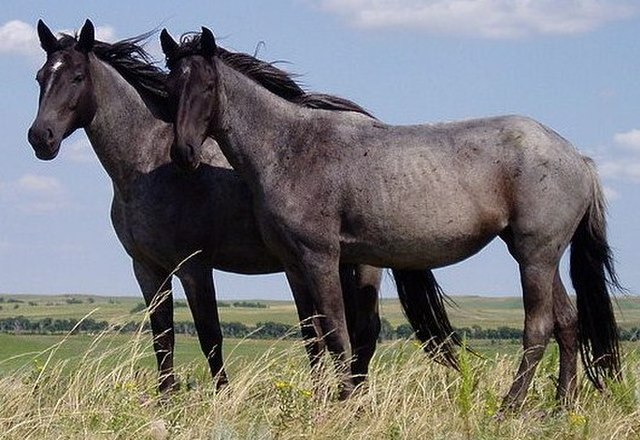Horses can use various gaits during locomotion across solid ground, either naturally or as a result of specialized training by humans.
An 1878 chronophotography sequence by Eadweard Muybridge of a horse in motion
The trot, a two-beat gait involving diagonal pairs of legs. The two legs with white stockings are off the ground.
The Fairman Rogers Four-in-Hand (1879–80) by Thomas Eakins, was the first painting to demonstrate precisely how horses move based on systematic photographic analysis. Eakins based these on Eadweard Muybridge's 1878 photographs of the trotter "Abe Edgington".
An Andalusian performing the canter. The left hind and right fore will land at the same moment, creating three beats in the stride. This horse is on the left lead, as the left rear and right fore are moving together, with the left hind leading the right hind. As the left fore lands, it will be in front of the right fore.
The horse is a domesticated, one-toed, hoofed mammal. It belongs to the taxonomic family Equidae and is one of two extant subspecies of Equus ferus. The horse has evolved over the past 45 to 55 million years from a small multi-toed creature, close to Eohippus, into the large, single-toed animal of today. Humans began domesticating horses around 4000 BCE, and their domestication is believed to have been widespread by 3000 BCE. Horses in the subspecies caballus are domesticated, although some domesticated populations live in the wild as feral horses. These feral populations are not true wild horses, which are horses that never have been domesticated and historically linked to the megafauna category of species. There is an extensive, specialized vocabulary used to describe equine-related concepts, covering everything from anatomy to life stages, size, colors, markings, breeds, locomotion, and behavior.
Horse
Points of a horse
Size varies greatly among horse breeds, as with this full-sized horse and small pony.
Bay (left) and chestnut (sometimes called "sorrel") are two of the most common coat colors, seen in almost all breeds.








